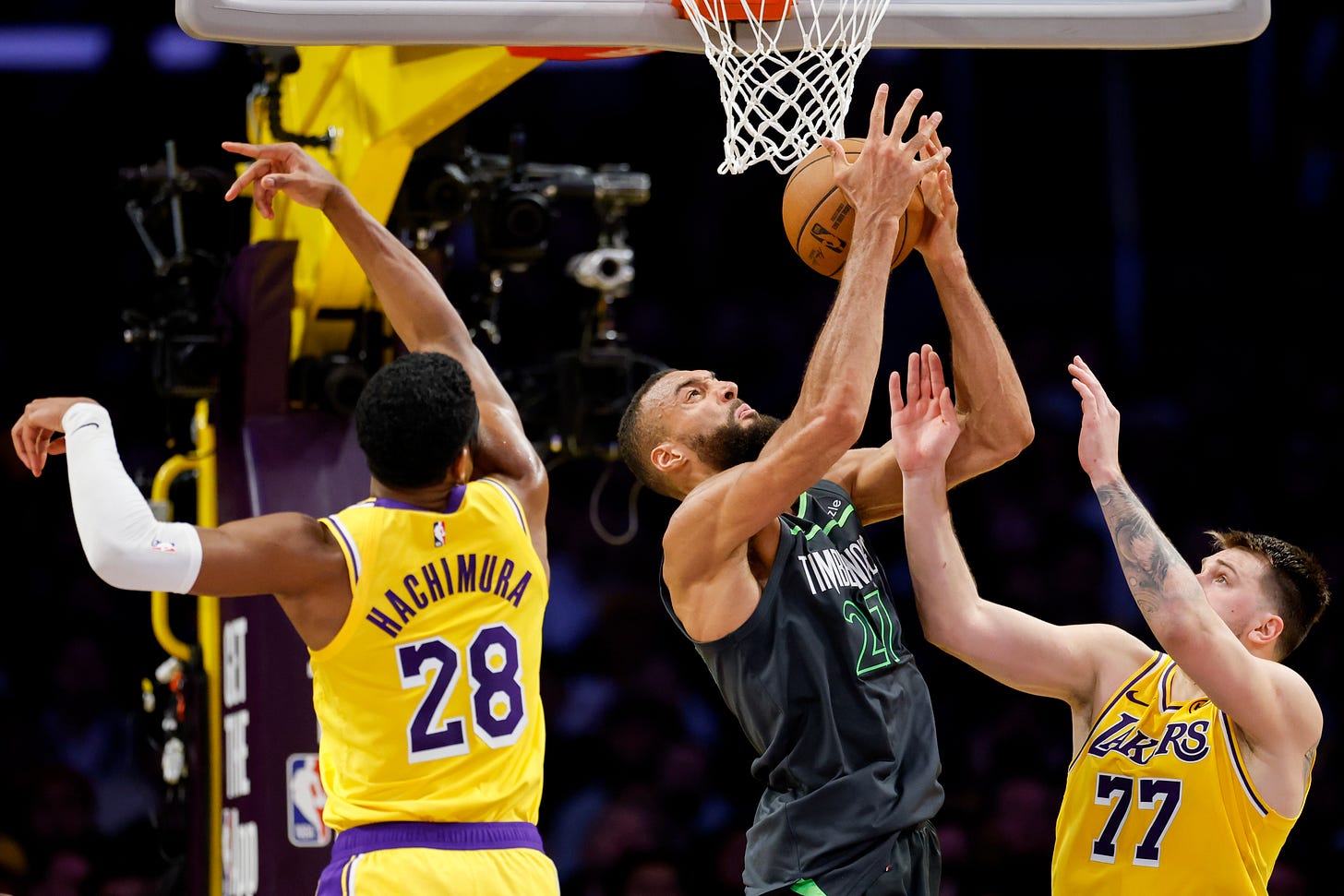NBA Trends, Part II: The Rise of Offensive Rebounding
Lakers’ playoff death sentence and Mavericks’ past strategic oversight
This is the second part of the NBA Trends series, where I take a closer look at key storylines from this year’s playoffs and the broader NBA landscape to see if we are witnessing any real strategic shifts.
As always, I will add Lakers and Mavericks context by examining where they stand in all of this and how these trends could influence their team-building decisions. For this series, I have parsed the last 20 years of game logs, covering more than 50,000 regular season and playoff records, including box score, advanced, and four factor data. I also went through the last 12 seasons of available tracking data.
In Part I, I explored how the NBA is entering a new era of speed, athleticism, and aggressiveness, and how that has made the game more physically demanding than ever. Today’s trend is a natural continuation of that, with the rise of offensive rebounding tied directly to an increase in size, physicality, and athleticism.
Today’s highlights:
The steady return of offensive rebounding 📈
Playoffs: rebounding as a weapon to punish smaller teams and mismatches
Offensive rebounding as a strategic priority and advantage 📈
Adapting or staying behind? Are the Lakers and Mavericks following the trend? 📈
1-The steady return of offensive rebounding 📈
After years of teams taking a more conservative approach to crashing the offensive glass and prioritizing transition defense, there has been a clear shift. Following nearly a decade of decline in offensive rebounding rates between 2010 and 2020, the numbers have steadily climbed in recent seasons. This year, the offensive rebounding rate reached its highest mark in the past ten years. It is not a brand-new trend. A lot has already been written about why offensive rebounding has come back in style, and I will revisit some of that strategic thinking in later sections.
Still, even if it is not new, this year’s playoffs have highlighted the shift in a big way.
The increase has not only been visible compared to prior postseasons, but also shows a notable jump from regular season levels.
2-Playoffs: rebounding as a weapon to punish smaller teams and mismatches
I already mentioned the noticeable jump in offensive rebounding rates from the regular season to the playoffs, as shown in the earlier chart. While this spike has been heavily influenced by a few first-round matchups and could regress slightly as the playoffs progress, the trend is hard to ignore. Watching those same series, it is clear that size and the ability to punish smaller lineups by relentlessly attacking the offensive glass have played a major role in shaping playoff outcomes.
I have written a lot about the Lakers’ struggles against the Wolves and how exhausting the uphill battle became as they played small and relied on a very short rotation. The bigger front line of Rudy Gobert, Julius Randle, and Jaden McDaniels dominated the offensive glass, and rebounding became a bigger issue with each game of the series. It culminated in the Game 5 collapse, where Gobert scored 27 points and grabbed 24 rebounds, including 9 on the offensive end. The Lakers finished their 2025 playoff run as the worst defensive rebounding team among all 16 postseason teams, and they did so by a significant margin.
Houston vs. Golden State was another first-round series where Ime Udoka tried to punish the smaller Warriors by frequently playing huge lineups. He often paired two centers, Alperen Sengun and Steven Adams, alongside additional length with forwards Jabari Smith Jr. and Tari Eason. In the end, Steph Curry and the Warriors survived that seven-game rock fight, but the banging took its toll. Like the Lakers, the Warriors faced similar challenges trying to keep the bigger Timberwolves off the offensive glass. Without Curry, they lost the series in five games and finished the playoffs as the third-worst defensive rebounding team.
Celtics vs. Knicks is another interesting series to watch from a rebounding perspective, especially given the effort and focus Joe Mazzulla has put into trying to play Mitchell Robinson off the floor. The Knicks have posted an exceptionally high 37 percent offensive rebounding rate with Robinson on the floor during the playoffs, while the Rockets reached an even higher 42 percent rate with Adams. It is no surprise that both players became targets of hack-a-big and intentional fouling tactics aimed at neutralizing that advantage.
Robinson and Adams lead the playoffs in fgOR% (the percentage of their team’s missed field goals that they personally rebounded), with 7-foot-4 rookie Zach Edey ranking fourth. All three are clear signs of the return of the big, physical, pound-the-glass center — a player type that looked nearly extinct at the height of the 5-out, spread-the-floor era.
3-Offensive rebounding as a strategic priority and advantage 📈
Keep reading with a 7-day free trial
Subscribe to digginbasketball to keep reading this post and get 7 days of free access to the full post archives.








